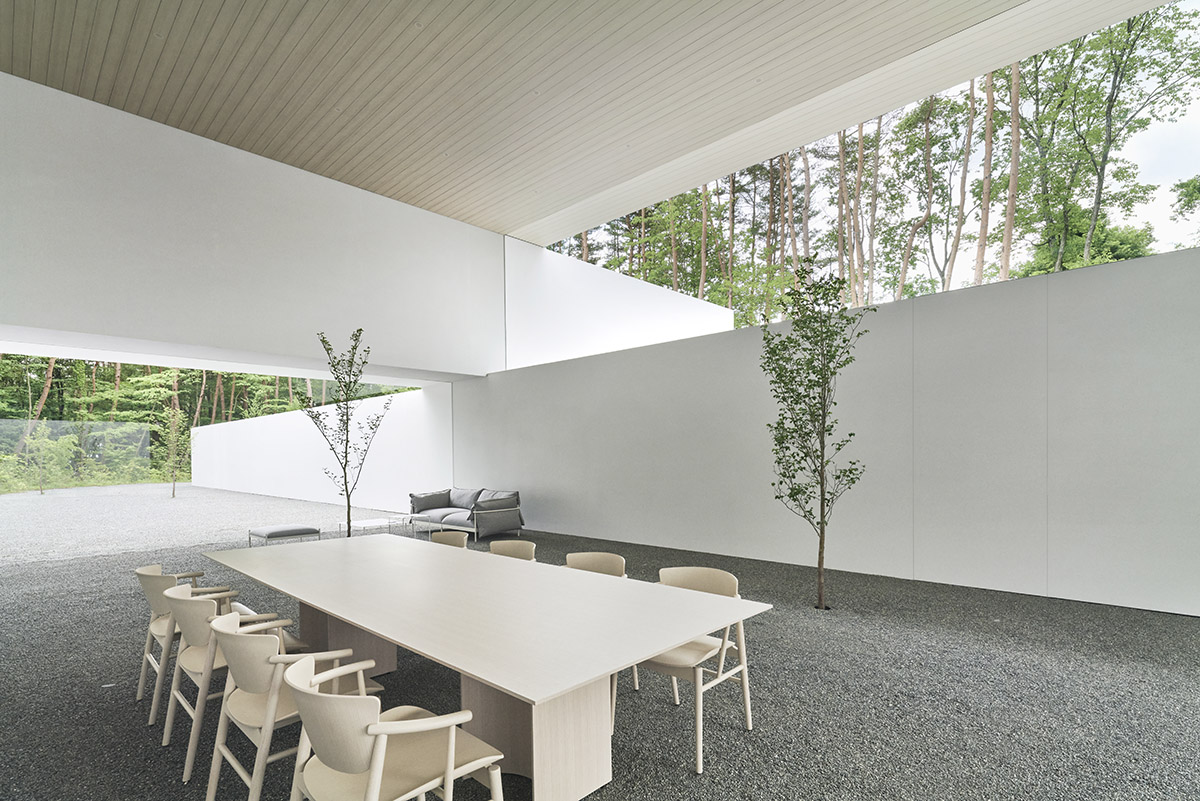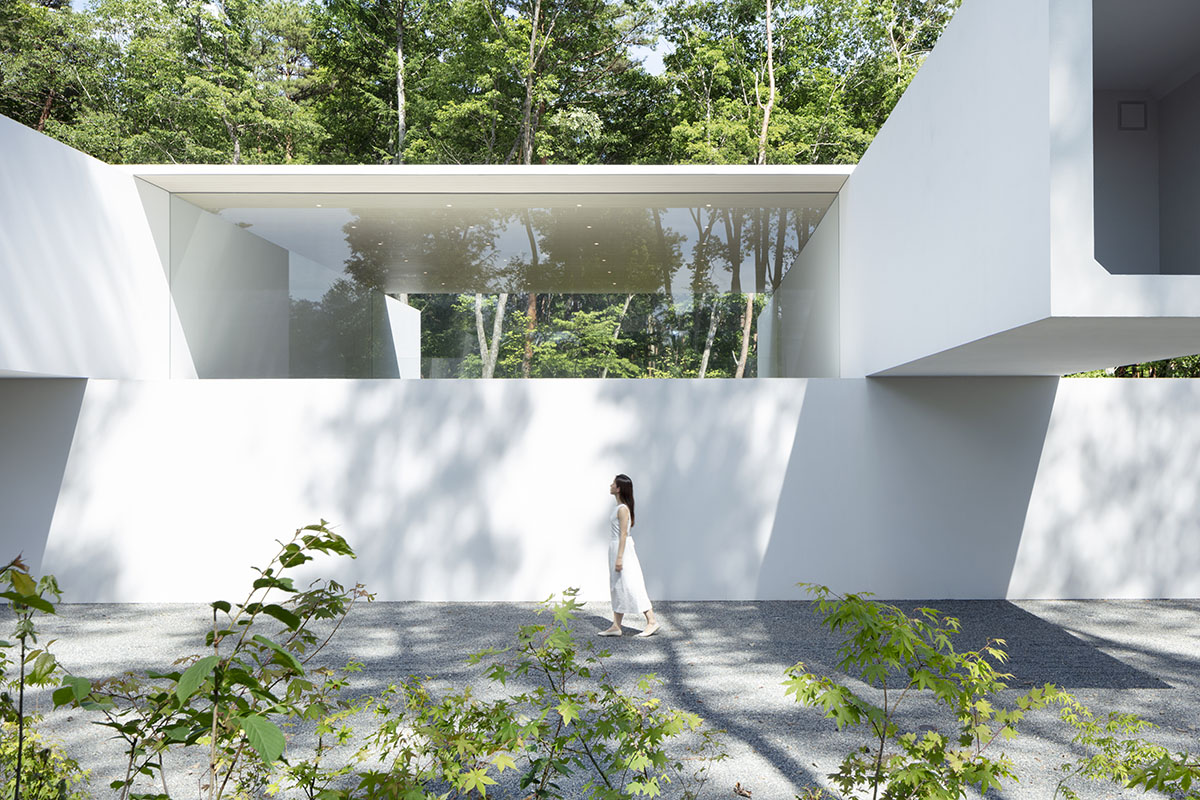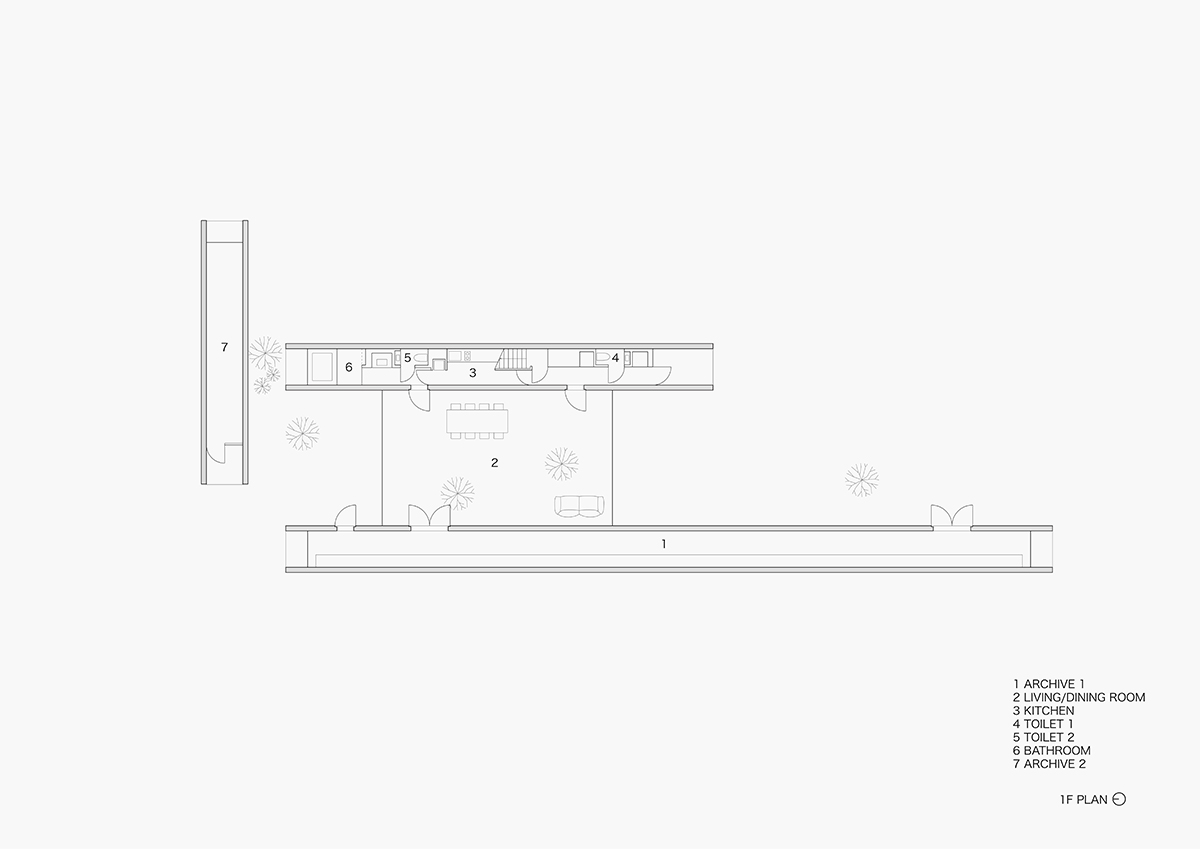Submitted by WA Contents
Nendo reveals tunnel-like archive and guesthouse in Nagano Prefecture, Japan
Japan Architecture News - Aug 05, 2022 - 10:05 3169 views

Japanese design studio Nendo has designed an archive and a guesthouse in Miyota-machi, Nagano Prefecture of Japan.
Four concrete tubes are stacked on top of each other and provide a new space for Nendo's furniture, products, and artwork.
Called Culvert Guesthouse, the house's distinctive volume is shaped by four elongated concrete tubes embracing a tunnel-like architecture through a combination of precast and prestressed construction methods.

Image © Daici Ano
Located in a quiet and nature-rich environment in the town of Miyota, the structure acts as a storage facility where ends of the tunnels frame the beautiful views towards the forest.
To build this structure, Nendo adopted precast construction and molded common parts in a factory and assembled on site.

Image © Takumi Ota
"An example of its applications in infrastructure projects is the box culvert (box-shaped concrete structures), used to store waterways, pathways, power lines, and communication lines buried underground," said Nendo.
"However, since the method itself does not provide a leak-free composition nor does it allow for stacking, both necessary for this architecture, prestressing was also used to connect the parts together,"the office added.

Image © Takumi Ota
As the studio explained, "the prestressing method is a technique used in civil engineering structures such as bridges, in which the parts are aligned and then tightened with wires to connect them."
By using the same approach, the studio obtained a seamless and smooth surface finish, reaching a tight seal, and durability.

Image © Takumi Ota
Nendo explained that "the common square-shaped parts weigh approximately 12 tons each, and a total of 63 of these parts were used. The size of the parts was derived from the loading size of the delivery truck and the weight that could be lifted by a crane."
"The 45-degree reinforcement at the entry corner, which is also found in general box culverts, serves as a brace and enhances earthquake resistance."

Image © Takumi Ota
By connecting these parts, a slender, the studio created a tunnel-shaped space with an internal dimension of approximately 2 x 2.3 meters.
The team used fourteen wires to connect each “tunnel” and paid attention to apply uniform tension to each wire at all times. "The work involved gradually tightening the wires over time until a tension of 46 tons was finally applied to each," the office added.

Image © Daici Ano
Composed of four stacked "tunnels", the building is covered with a roof in the center. The main storage room is a narrow and longest one and its depth spans approximately 40 meters.
Besides the main storage room, there are two smaller storage rooms, but the studio envisions to add more storage rooms to the site in the future as the collection grows.

Image © Daici Ano
The team places kitchen, bathroom, toilet, and other water facilities on the first floor, and a compact bedroom and a study are located on the second floor.
"The windows were made without metal frames as much as possible, and high-transparency glass measuring up to 10 meters in length was fixed into the grooves in the same manner as shoji screens," said the office.
"The gravel and plantings used in the exterior were also arranged in the interior to draw the outside environment into the interior."

Image © Daici Ano
According to the studio, to make it easier to walk on, the gravel was partially hardened with resin. "Instead of just pouring resin over the gravel, which is usually the case, the resin was applied to the base first and then gravel was laid on it so that the surface wouldn’t become glossy," the office added.
In addition, the door handles would have looked abrupt if installed as-is, so an original handle was designed, which hides in the small gap between the door and the wall.

Image © Takumi Ota
The bathtub is carved into the floor, such that the water surface aligns with the floor, creating the appearance that the tunnel shape is continuous.
As the team noted, the resulting concept adopts less architectural approach, but rather showcases a project that combines civil engineering concepts with product design details.

Image © Takumi Ota

Image © Takumi Ota

Image © Takumi Ota

Image © Takumi Ota

Image © Takumi Ota

Image © Daici Ano

Image © Daici Ano

Image © Takumi Ota

Image © Takumi Ota

Image © Daici Ano

Image © Daici Ano

Image © Takumi Ota

Image © Takumi Ota

Image © Takumi Ota

Image © Takumi Ota

Image © Daici Ano

Image © Takumi Ota

Image © Takumi Ota

Image © Daici Ano

Image © Daici Ano

Image © Takumi Ota

Image © Daici Ano

Image © Takumi Ota

Image © Takumi Ota

Image © Daici Ano

Image © Takumi Ota

Site plan

Ground floor plan

First floor plan

Section
Japanese design firm Nendo was founded in 2002 by Oki Sato. Based in Tokyo, the office produces architectural and interior projects, as well as products, graphics and installations.
Nendo revitalized existing Shanghai Times Square shopping mall in Pudong, Shanghai. The office completed a two-family house in Tokyo, featuring a giant staircase passing through the facade.
Project facts
Project name: Culvert Guesthouse
Architects: Nendo
Location: Miyota-machi, Nagano Prefecture, Japan
Collaborators:
Noritaka Ishibayashi
Ryota Maruyama
Daisuke Maeda
NIITSU-GUMI
P. S. Mitsubishi Construction
Top image © Takumi Ota.
All drawings © Nendo.
> via Nendo
